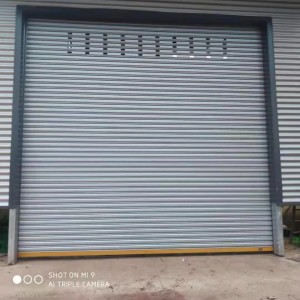Sliding doors have become a popular choice for homeowners looking to maximize space and add a modern touch to their interiors. The sleek and space-saving design of sliding doors makes them a practical and stylish option for any room in the home. But can any interior door be a sliding door? Let’s explore the possibilities and considerations when converting a traditional hinged door to a sliding door.
Simply put, not all interior doors can be easily converted to sliding doors. However, with the right planning and installation, many interior doors can be converted into sliding doors to suit your needs and preferences.
One of the key factors to consider when determining whether a door can be converted to a sliding door is the space available. Sliding doors require some wall space on both sides of the door opening to accommodate the sliding mechanism. If wall space is limited, it may not be feasible to install sliding doors without significant modifications to the existing structure.
Another consideration is the weight and size of the door. Sliding doors need to be supported by sturdy tracks and hardware to ensure smooth, easy operation. If a door is too heavy or large, it may require additional reinforcement or custom hardware to support its weight, which can increase installation complexity and cost.
The type of door frame and structure also determines whether the door can be converted into a sliding door. Solid core doors and solid wood frame doors are generally better conversion options as they provide the necessary stability and support for the sliding mechanism. Hollow core doors or doors with lightweight frames may not be suitable for conversion without significant modifications to strengthen the door and frame.
It is important to consider the functionality and practicality of converting your door into a sliding door. While sliding doors offer space-saving and stylish aesthetics, they may not be the best choice for every room or situation. For example, rooms that require a high level of privacy or soundproofing may not be suitable for sliding doors because they do not provide the same level of sealing and soundproofing as traditional hinged doors.
If you are considering converting interior doors to sliding doors, you must consult with a professional contractor or door expert to assess the feasibility and potential challenges of conversion. They can provide valuable insights and advice based on the specific characteristics of the door, the surrounding space and your desired results.
In some cases, it may be more practical to replace the existing door with a prefabricated sliding door system designed for sliding applications. These systems come with all necessary hardware and components to make the installation process easier and ensure optimal performance and functionality.
When converting a door into a sliding door, it’s important to consider the overall design and aesthetics of the space. Sliding doors come in a variety of styles and materials, including glass, wood, and metal, allowing you to choose a door that fits your home’s existing decor and architectural style.
In summary, while not all interior doors can be easily converted to sliding doors, many can be retrofitted with the right planning, expertise and consideration of space and door characteristics. Whether you want to maximize space, add a contemporary feel or improve the functionality of a room, with the right approach and professional guidance, converting a traditional hinged door into a sliding door can be a practical and stylish solution.
Post time: Apr-19-2024

